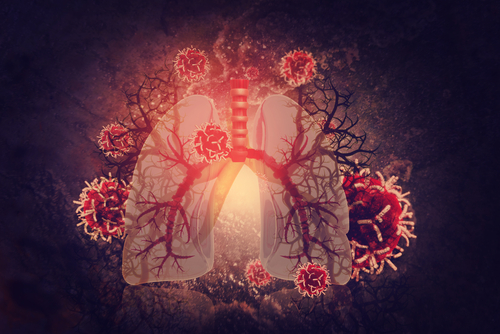Triclosan, Antibacterial in Toothpaste, Works Well as Combo Antibiotic Treatment, Study Suggests

An antibacterial compound found in toothpaste, called triclosan, may be part of a future cystic fibrosis (CF) treatment, a Michigan State University study suggests.
The research, “Triclosan is an aminoglycoside adjuvant for the eradication of Pseudomonas aeruginosa biofilms,” was published in the journal Antimicrobial Agents and Chemotherapy.
Patients with CF develop thick and sticky mucus in the lungs that diminishes their function and attracts bacteria. These bacteria form densely packed communities attached to each other by a sugar matrix, which constitutes a biofilm — a slimy barrier that makes bacteria difficult to kill with antibiotics.
Aiming to better treat Pseudomonas aeruginosa, a difficult and antibiotic-resistant bacteria often found in CF patients, researchers grew 6,000 biofilms in vitro, and tested the effectiveness of tobramycin, an antibiotic against that bacteria, in combination with several different compounds.
They found 25 compounds that were effective — but triclosan plus tobramycin clearly stood out.
“It’s well known that triclosan, when used by itself, isn’t effective at killing Pseudomonas aeruginosa,” Alessandra Hunt, one of the study’s co-authors, said in a university press release.
“Our results,” however, “show that the combination increases both the rate and degree of killing of cells within P. aeruginosa biofilms which has important clinical implications for the treatment of biofilm infections in CF patients,” the researchers wrote.
“This synergistic treatment significantly accelerated killing of biofilms compared to tobramycin treatment alone, and the combination was effective against 6/7 CF clinical isolates compared to tobramycin treatment alone including a tobramycin resistant strain,” the study added.
Besides P. aeruginosa, the triclosan and tobramycin combination was also effective against biofilms of Burkholderia cenocepacia and Staphylococcus aureus.
Triclosan’s use in soaps and hand sanitizers was recently limited by the U.S. Food and Drug Administration (FDA) out of concern for its overuse by the general public. Its continuing use in toothpaste is supported by data demonstrating both its safety and efficacy in preventing gingivitis.
“Limiting its use is the right thing to do,” said Michael Maiden, the study’s first author. “The key is to avoid creating resistance to a substance.”
Tobramycin is the most common antibiotic treatment for CF, but it does not eliminate lung infections, said Christoper Waters, the study’s senior author. This can lead to chronic infections that eventually require a lung transplant.
He also noted the potential toxicity of tobramycin, which includes damage to the kidneys and hearing loss.
“Our triclosan finding gives doctors another potential option and allows them to use significantly less of the tobramycin in treatment, potentially reducing its use by 100 times,” Hunt said.
The team is planning to test the combination treatment in a mouse model of CF. If successful, researchers expect to quickly start a clinical trial, as both medications are FDA approved.







